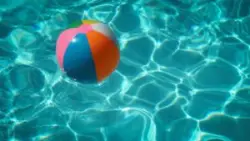
The Red Cross reports that water competency helps to improve water safety not just for yourself, but for those around you. There are three important steps that you can follow in order to become water competent:
- Gain basic swimming skills. If you are in water you should be able to safely enter and exit, tread water or float, come up to the surface after going under water, and swim comfortably at least 25 yards;
- Be water smart. It is critical to know your limits and to swim within those confines. You should also know if you can adjust to different water environments such as oceans and rivers;
- Know emergency skills. You should learn how to recognize the signs of drowning and how to respond in a water emergency. Taking a CPR and first aid training class is essential to learning these skills.
Because not everyone is water competent, it is important to be aware of your surroundings in order to ensure your safety and the safety of others.
Water Emergency Tips
Even if you make water safety a priority when you are out and you have taken the time and effort to become water competent, a water emergency could still happen. For this reason, the best way to confront an emergency situation involving water is to be prepared for such a situation.
Keep in mind that if a child goes missing, always check the water first. Every second counts when it comes to an emergency. If you realize that someone is drowning, you should:
- Immediately yell for help. If there is a lifeguard on duty, alert one right away;
- Rescue the person and remove him or her from the water. Do not put yourself at risk;
- Ask somebody else to call 9-1-1. If no one else is around, provide two minutes of emergency care, and then dial 9-1-1;
- Start performing rescue breathing and CPR to try to keep the person stable;
- If available and needed, provide additional care with advanced medical devices.
Submersion Accidents in Clark County
The Southern Nevada Health District (SNHD) tracks the number of children between the ages of 0 to 14 years who have experienced a water submersion accident in Clark County and other areas. The SNHD tracks both fatal and nonfatal water emergencies. According to the SNHD’s Drowning Registry, a nonfatal drowning can result in no impairment, some impairment, or significant impairment for the drowning victim.
Between 2019 and 2021, the SNHD Drowning Registry received reports of 67 submersion incidents. According to its data:
- A majority of those accidents involved children age 4 or younger;
- Nearly 60% of the drownings happened in pools;
- Among children aged 0 to 14, the number of fatal drownings reported was 14.
One fatal drowning, especially when the victim is a child, is one too many. Moreover, even a drowning that is not fatal can have long lasting and devastating effects on both the victim and family members.
Contact Our Las Vegas Lawyers
A Nevada drowning accident can cause long-term medical issues, disability, expensive medical costs, and emotional trauma. Work with the experienced personal injury attorneys at H&P Law if you or a loved one has been the victim of a Nevada drowning. We will help ease the stress of this difficult time and fight for the best outcome available under the law.




